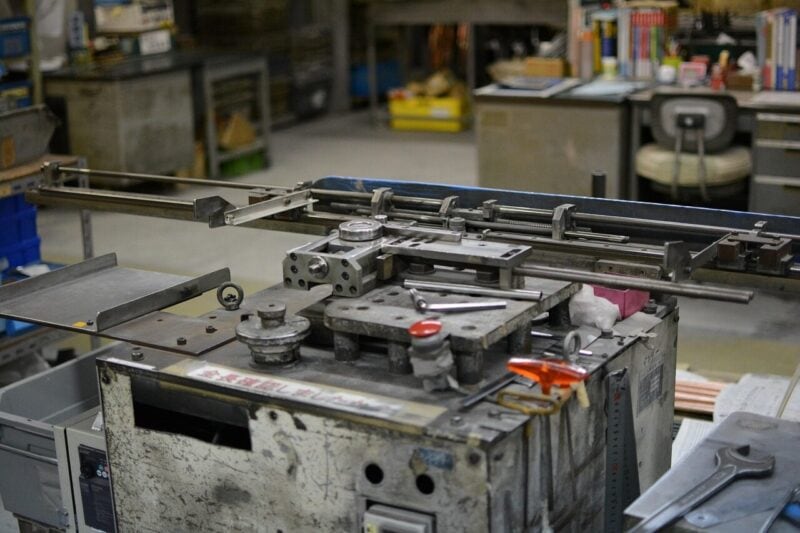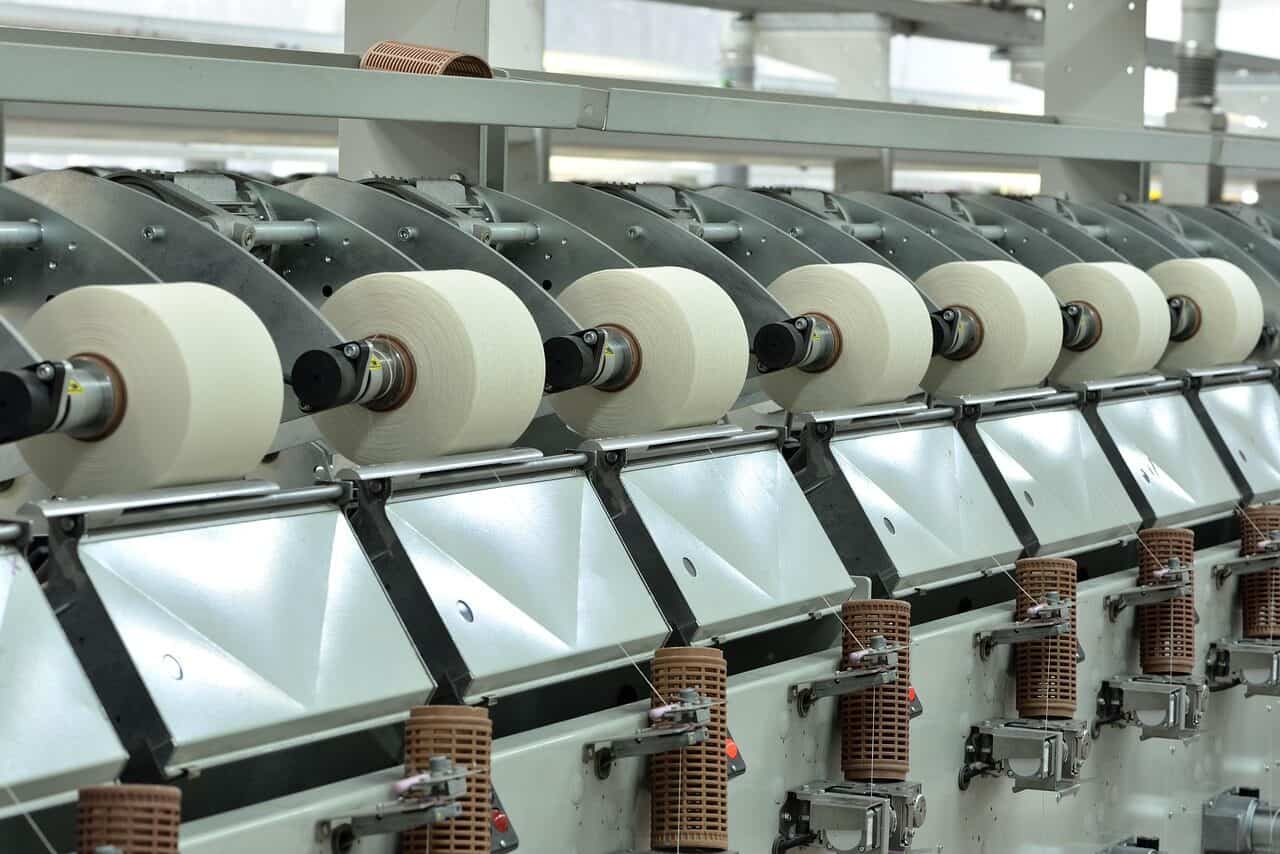Cookie OEM Production: A Professional Manufacturer’s Guide
Введение
*Have you created an amazing cookie OEM recipe that customers love, but now struggle with making large amounts without losing quality or spending too much money?* This is the important moment where promising food brands either grow into well-known names or get stuck because of production problems. The smart solution lies in a partnership model that has helped countless successful food products: Original Equipment Manufacturing (OEM). By having a specialized partner handle production, you can grow your business in ways that would otherwise cost millions of dollars. This article is your complete guide. We will explore the world of cookie OEM, from understanding the basic ideas and choosing the right partner to managing a successful, large-scale production run.
OEM, ODM, and Private Label
To make the right choice, you must first understand the language of contract manufacturing. These terms explain the type of partnership and who owns the final product.
What is Cookie OEM?
Original Equipment Manufacturing (OEM) is a partnership where a manufacturer makes cookies based on the *client’s unique recipe, special requirements, and exclusive branding*. In this model, you, the client, own the intellectual property (IP)—the recipe. The manufacturer acts as your production team, bringing your specific vision to life at a large scale. Think of it as hiring a world-class construction company to build a custom home from an architect’s unique plans. You own the design; they provide the tools, workers, and skills to build it exactly as you imagined.
How It Differs
OEM is often mixed up with two other common models: ODM and Private Label.
- Original Design Manufacturing (ODM): In an ODM partnership, the manufacturer has a collection of pre-made cookie OEM. You can choose a recipe, ask for small changes (like adding chocolate chips or changing a flavor), and then sell the product under your brand. It offers some customization without the deep research and development of OEM.
- Private Label: This is the fastest and simplest model. You choose a manufacturer’s existing, ready-made product and simply put your brand’s packaging on it. The product is generic and available to other brands. This is common for supermarket store brands.
Table 1: Comparing Manufacturing Models
| Характеристика | OEM (Original Equipment Manufacturing) | ODM (Original Design Manufacturing) | Частная марка |
| Recipe Ownership | Client | Manufacturer (Client can modify) | Manufacturer |
| Product Uniqueness | Высокий | Средний | Низкий |
| Speed to Market | Slower | Умеренный | Fastest |
| Upfront R&D Cost | Highest | Средний | Низкий |
| Лучшее для | Brands with unique IP and a strong brand identity. | Brands needing a quick launch with some customization. | Retailers or brands wanting a generic product line quickly. |
Стратегические преимущества OEM
Choosing the cookie OEM route is more than just outsourcing; it’s a smart decision that provides a powerful competitive advantage and speeds up growth. It allows you to use a partner’s money, skills, and size.
Unlock Economies of Scale
An OEM partner’s entire business is built on efficiency. They operate large-scale, automated production lines and have significant buying power for raw materials like flour, sugar, and butter. This allows them to produce your cookies at a cost-per-unit that is almost impossible to achieve in a small-scale commercial kitchen or a self-funded facility. This cost efficiency directly improves your profit margins or allows you to price your product more competitively.
Access Expertise and Technology
When you partner with an OEM, you gain immediate access to a team of food scientists, quality control specialists, and production engineers. More importantly, you use millions of dollars in specialized equipment without the capital expense. This includes commercial-grade spiral mixers, precise wire-cut or rotary-molded depositors, long tunnel ovens for perfect baking consistency, sophisticated chocolate coaters, and high-speed automated flow-wrappers for packaging. This technology ensures your product is not only made efficiently but also with a level of consistency that builds consumer trust.
Focus on Core Competencies
Manufacturing is a full-time, resource-heavy job. By trusting production to an expert, you free up your company’s most valuable resources—time, money, and talent—to focus on what drives growth: marketing, brand building, customer engagement, sales channel development, and new product innovation. You work *on* your business, not just *in* it.
Ensure Consistency and Quality
Professional cookie OEM operate under strict quality control systems. They implement and maintain Hazard Analysis and Critical Control Points (HACCP) plans and Good Manufacturing Practices (GMP). These frameworks are designed to identify and control potential hazards in the production process, ensuring every single cookie OEM in every single batch meets the exact same standard for taste, texture, appearance, and safety.
Navigate Regulatory Hurdles
The food industry is governed by a complex web of safety regulations. A reputable OEM partner is already certified and compliant, saving you a massive administrative and legal burden. Look for certifications recognized by the Global Food Safety Initiative (GFSI), such as BRC or SQF.
- BRC (Brand Reputation through Compliance): This standard focuses on ensuring manufacturers meet strict standards for product safety, integrity, legality, and quality.
- SQF (Safe Quality Food): This program is a comprehensive food safety and quality management system. An SQF certification shows a manufacturer’s commitment to a culture of food safety from farm to fork.
These certifications aren’t just acronyms; they are your assurance that the manufacturer operates at the highest level of professionalism and safety.
Choosing the Right Partner
Selecting an OEM manufacturer is one of the most critical decisions your brand will make. The right partner is a strategic asset; the wrong one can lead to quality issues, missed deadlines, and damaged reputation. This requires a careful research process.
Phase 1: Research and Shortlisting
Your search for a partner begins with identifying potential candidates. Move beyond a simple web search and tap into industry networks.
- Trade Shows: Events like the Fancy Food Show, Natural Products Expo, or the Private Label Manufacturers Association (PLMA) show are invaluable. You can meet representatives, see product samples, and get a feel for a company’s capabilities in person.
- Industry Directories: Publications and online portals dedicated to the food and beverage industry often have directories of contract manufacturers.
- B2B Platforms: Websites like Thomasnet or specialist food industry platforms connect brands with qualified suppliers and manufacturers.
- Referrals: Talk to others in the industry. Your ingredient suppliers or packaging partners may have recommendations based on their own networks.
Phase 2: The Vetting Process
Once you have a shortlist, it’s time for deep research. Use a structured evaluation to compare candidates objectively. A simple conversation is not enough; you need to verify their claims and assess their true capabilities.
Table 2: The Cookie OEM Evaluation Checklist
| Критерии | Key Questions to Verify |
| Сертификаты | Are you GFSI-certified (SQF, BRC)? Can you provide a copy of your latest audit score? Do you have capabilities for Organic, Kosher, Halal, or Gluten-Free production if required? Can you manage allergen separation effectively? |
| Production Capabilities | What specific types of cookies are you equipped to produce (e.g., wire-cut, deposited, rotary, co-extruded)? What are your daily/weekly production capacities? What are your mixing, baking, and cooling systems? |
| Minimum Order Quantities (MOQs) | What is your MOQ per production run and per SKU? Is there flexibility for an initial smaller run? How do MOQs change with product complexity? |
| Ingredient Sourcing | Can you source our specific, specialty ingredients? What is your supplier verification and approval process? How do you handle traceability from raw material to finished product? |
| R&D and Formulation | Do you have food scientists on staff? What is your process for scaling a “kitchen recipe” to a commercial formula? Is there a separate fee for R&D and pilot runs? |
| Коммуникация и управление проектами | Who will be our single, dedicated point of contact? What is your standard communication protocol for project updates and issue resolution? |
| Reputation & References | Can you provide 2-3 references from current clients with products similar in complexity to ours? Can we tour the facility? |
| Financial Stability & Transparency | How do you manage and communicate fluctuations in ingredient costs? What are your payment terms? |
Ключевые вопросы, которые нужно задать
Beyond the checklist, certain qualitative questions can reveal a partner’s culture and true competence.
- *”Describe a time you had to troubleshoot a production issue with a client’s unique recipe. What was the problem, and how did your team resolve it?”* This tests their problem-solving skills and transparency.
- *”What is your process for managing and communicating unexpected ingredient cost fluctuations or supply chain disruptions?”* This tests their financial transparency and proactive planning.
- *”Can we schedule a pilot run on the full production line before committing to a large volume order?”* This tests their flexibility and willingness to build a true partnership.
- *”How do you contractually ensure our recipe’s intellectual property is protected?”* This tests their trustworthiness and the strength of their legal agreements.
The answers to these questions will tell you more about a manufacturer’s character than any marketing brochure.
The OEM Production Process
Understanding the journey from concept to commercialization helps you set realistic timelines, allocate resources, and manage the partnership effectively. We break it down into five distinct phases.
Phase 1: Recipe Formulation & R&D
This is where your kitchen recipe becomes a commercial formula. The manufacturer’s food scientists will analyze your recipe and process, making adjustments for large-scale equipment. Ingredients might be swapped for commercial equivalents (e.g., liquid eggs instead of fresh-cracked), and processes will be standardized to ensure consistency and shelf stability.
*Pro-Tip:* *Be prepared for minor tweaks. An ingredient that works perfectly in a 1kg batch may behave differently in a 100kg industrial mixer. Trust the manufacturer’s food scientists—their goal is to replicate your product successfully—but hold firm on the core sensory attributes (taste, texture, aroma) that define your brand.*
Phase 2: Bench-Top Sampling & Pilot Run
First, the R&D team will create small “bench-top” samples in their lab for your approval. Once you are satisfied, the project moves to a pilot run. This is a small-scale production run on the actual manufacturing line. It’s a critical stress test of the formula, equipment settings, and process flow before committing to a full run.
*Pro-Tip:* *This is your last, best chance to make significant changes. If possible, be physically present for the pilot run. Assess not just taste and texture, but also finished product consistency in size, weight, color, and packaging. Take photos and detailed notes.*
Phase 3: Sourcing, Quoting, and Contracts
With an approved pilot product, the manufacturer can finalize everything for mass production. They will lock in pricing with their ingredient and packaging suppliers based on your forecasted volume. All terms, pricing, and specifications are then formalized in a legally binding Manufacturing Agreement.
*Pro-Tip:* *Carefully review the Manufacturing Agreement. Ensure it clearly defines quality standards, ownership of any leftover ingredients or packaging, liability terms, confidentiality (IP protection), and the precise process for rejecting a substandard batch of product.*
Phase 4: Mass Production & Quality Assurance
This is where your vision comes to life at scale. The full production run begins, overseen by the manufacturer’s quality control team. Throughout the run, they perform continuous checks, such as metal detection, weight checks, bake color analysis, and visual inspections, to ensure every product conforms to the agreed-upon specifications.
*Pro-Tip:* *Request that the manufacturer pull and hold “retain samples” from each production code. These are samples kept in storage for the duration of the product’s shelf life. In the event of a future customer complaint or quality inquiry, these samples are invaluable for investigation.*
Phase 5: Packaging & Logistics
The finished, cooled cookies are fed into automated packaging lines and sealed in your branded materials. Cases are then stacked on pallets, labeled, and prepared for shipment. Depending on your agreement, they will be shipped to your warehouse, a third-party logistics (3PL) provider, or directly to your distributors.
*Pro-Tip:* *Involve your OEM partner in the packaging design process early on. They can provide critical feedback on film materials, dimensions, and artwork layouts that will run most efficiently on their machines. This simple step can prevent costly delays and material waste down the line.*
Table 3: Sample Cookie OEM Project Timeline
| Фаза | Typical Duration | Key Milestone |
| Partner Vetting & Selection | 4–8 Weeks | Manufacturing Partner Selected & NDA Signed |
| R&D, Formulation & Sampling | 6–12 Weeks | Final Bench-Top Recipe Approved |
| Contracts & Final Quoting | 2–4 Weeks | Manufacturing Agreement Signed |
| Pilot Run & Approval | 1–2 Weeks | Pilot Product Approved for Mass Production |
| First Mass Production Run | 2–4 Weeks | First Order of Finished Product Shipped |
| Total Estimated Timeline | 4–7 Months | Product Ready for Market |
Отраслевые применения
Cookie OEM is a flexible model used across a wide range of the food industry. Understanding these applications can provide inspiration for how this strategy can be applied to your own business.
Emerging & Challenger Brands
For startups and direct-to-consumer (DTC) brands, OEM is often the only viable path to achieving significant scale. It allows them to compete with larger players without needing millions in capital to build and certify a factory. This is especially true for brands in niche categories. *Example: A new vegan, gluten-free cookie OEM brand that requires a certified allergen-free facility to ensure product safety and make credible marketing claims.*
Airlines and Hospitality
Many businesses in the travel and hospitality sectors use OEM to enhance their customer experience with a unique, branded food item. This creates a memorable touchpoint that reinforces brand quality. *Example: A luxury hotel chain commissioning a signature lemon-rosemary shortbread cookie OEM, with its logo subtly stamped on it, to be placed on the pillow during turndown service.*
Retail & Grocery Chains
While supermarkets are famous for using private label for basic goods, they increasingly use OEM for their premium store-brand lines. This allows them to offer unique, high-quality products that can compete with national brands, but with higher margins. *Example: A grocery chain’s “premium selection” line featuring a unique salted caramel and pecan cookie for the holiday season, developed exclusively for them through an OEM partnership.*
Promotional & Corporate Gifting
Companies outside the food industry use cookie OEM for marketing and corporate relations. Custom-made cookies serve as a tangible, delicious form of advertising or appreciation. *Example: A software company commissioning thousands of custom-packaged cookies decorated with their logo to give away at a major industry trade show.*
Future of Manufacturing
The world of cookie OEM is not static. It is constantly evolving with consumer demands and technological advancements. A forward-looking brand should seek a partner who is not just skilled today but is also prepared for the trends of tomorrow.
Sustainability and Clean Labels
Consumers are increasingly examining ingredient lists and a brand’s environmental impact. This is driving demand for ethically sourced ingredients (e.g., sustainable palm oil, fair-trade cocoa and sugar) and “clean labels” with simple, recognizable ingredients. OEM partners with strong, transparent, and certified supply chains are becoming much more valuable as they enable brands to meet this consumer demand authentically.
Automation and Industry 4.0
The modern food factory is becoming “smarter.” We are seeing greater use of robotics for precise and repetitive tasks like complex decorating and pick-and-place packaging. Furthermore, the integration of Internet of Things (IoT) sensors on production lines allows for real-time monitoring of critical parameters like oven temperature, humidity, and baking time. This data-driven approach leads to unmatched consistency, reduced waste, and greater overall efficiency.
Personalization and Niche Diets
The “one-size-fits-all” cookie is a thing of the past. There is explosive growth in demand for products tailored to specific dietary needs and lifestyle choices, including keto, paleo, plant-based, and high-protein options. This requires OEM partners with strong R&D departments capable of handling complex formulations and sourcing unconventional ingredients, such as almond flour, monk fruit sweetener, or even upcycled ingredients.
Agile Manufacturing & Lower MOQs
Historically, high MOQs have been a significant barrier to entry for smaller brands. However, technology and process improvements are enabling some advanced manufacturers to become more flexible. By optimizing changeover times and production scheduling, they can offer more flexible run sizes. This trend is making OEM accessible to a wider range of emerging businesses, fostering greater innovation in the market.
Часто задаваемые вопросы
Navigating an OEM partnership for the first time brings up many questions. Here are answers to some of the most common queries we encounter.
What are typical MOQs for cookies?
Minimum Order Quantities (MOQs) vary dramatically based on the manufacturer’s size, equipment, and the complexity of the cookie. For a large, highly automated facility, an MOQ might be 10,000 to 20,000 pounds (approx. 4,500 to 9,000 kg) of dough per run. Smaller or more specialized manufacturers might offer MOQs as low as 1,000 to 2,000 pounds. Always ask this question early in the vetting process to ensure a partner’s scale aligns with your business needs.
How is my recipe’s IP legally protected?
Your intellectual property is protected primarily through a strong Non-Disclosure Agreement (NDA) and the Manufacturing Agreement. The NDA should be signed before you share any proprietary information. The Manufacturing Agreement should contain a specific clause stating that you retain 100% ownership of your formulation and that the manufacturer is prohibited from replicating it for any other client or for their own purposes.
What are the common costs involved?
The primary cost is the price-per-unit or price-per-pound of the finished cookie. However, be aware of other potential costs:
- R&D/Formulation Fees: Some manufacturers charge a one-time fee to commercialize your recipe.
- Tooling/Setup Costs: If your cookie requires a custom mold or die, there will be a one-time cost for that tool.
- Pilot Run Costs: You will typically pay for the ingredients, labor, and line time for the pilot run.
- Ingredient & Packaging Storage: Some facilities may charge a fee if you require them to hold large amounts of your unique inventory.
Can the manufacturer also source packaging?
Yes, most full-service OEMs can and prefer to handle packaging sourcing. They have established relationships with packaging suppliers and understand the technical specifications of materials that run well on their equipment. This is known as a “turnkey” solution. Alternatively, you can source your own packaging and have it delivered to the manufacturer, but this requires careful coordination.
Conclusion: Building Your Empire
Scaling a cookie brand from a beloved local favorite to a regional or national success story is a huge task. It becomes clear that the journey depends less on your ability to bake and more on your ability to build a smart, scalable manufacturing strategy. The path of Original Equipment Manufacturing offers a powerful solution, allowing you to protect your unique recipe while using the scale, technology, and expertise of an established production partner.
As we’ve explored, success depends on three core pillars. First is understanding the strategic power of OEM to maintain brand uniqueness while achieving critical economies of scale. Second is committing to a careful vetting process to find a partner whose capabilities, certifications, and culture align with your vision. Finally, it requires a clear understanding of the concept-to-commercialization journey, enabling you to manage the partnership proactively from R&D to logistics.
Choosing an OEM manufacturer is not a simple supplier transaction; it is one of the most significant strategic decisions your food brand will make. The right partnership goes beyond a purchase order. It becomes a true alliance—a fusion of your brand vision with their production power—that enables sustainable growth, continuous innovation, and long-term success in a competitive marketplace.
Private Label Manufacturers Association (PLMA) https://plma.com/
Contract Packaging Association (CPA) https://www.contractpackaging.org/
Американское общество пекарей (ASB) https://asbe.org/
Specialty Food Association https://www.specialtyfood.com/
Американская ассоциация пекарей (ABA) https://americanbakers.org/
BRCGS – Brand Reputation Compliance Global Standards https://www.brcgs.com/
SQF Institute – Safe Quality Food Certification https://www.sqfi.com/
Журнал "Пекарное дело https://www.bakingbusiness.com/
Food Processing & Suppliers Association (FPSA) https://fpsa.org/
Журнал о закусках и оптовой торговле хлебобулочными изделиями https://www.snackandbakery.com/










